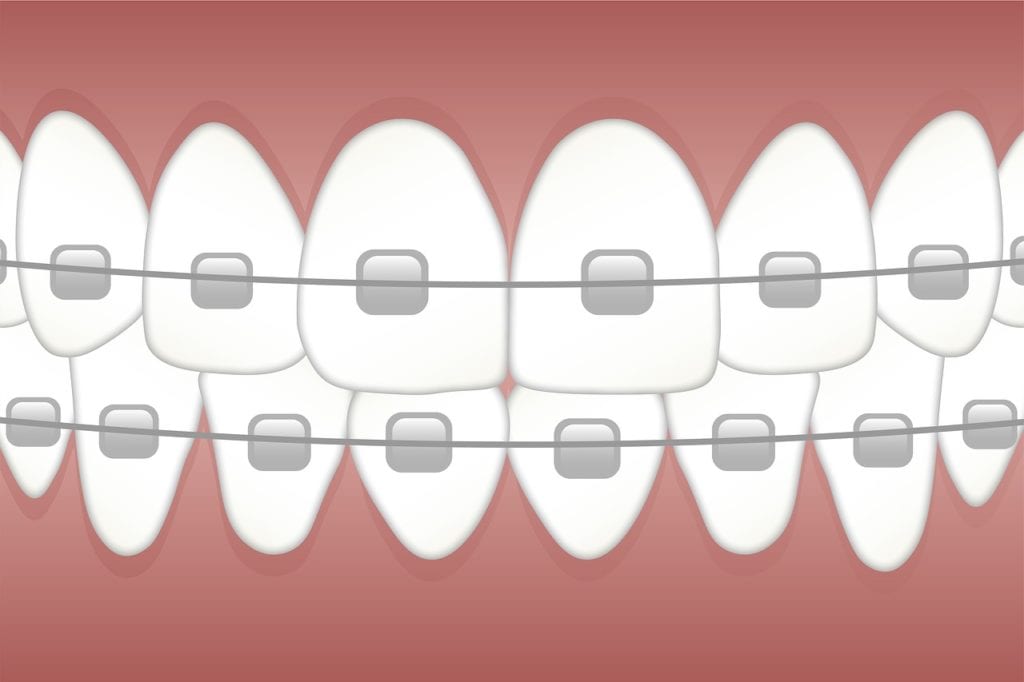Whether it’s the mindset of wondering may be better than knowing or the embarrassment of asking a question about fear, many teens are hesitant to ask a big question about orthodontic braces – does it hurt when orthodontic braces are applied? San Antonio Orthodontist, Dr. Keith Blalock provides some enlightment on this common question that patients ask…
When an orthodontist actually places the brackets for braces on the teeth, it’s usually a painless and quick procedure. This is the result of a thoroughly mapped out pre-treatment plan between the orthodontist and patient.
By the time the appointment comes where the orthodontist cements the brackets to the teeth, he/she has already used study models and/or templates to establish the exact positioning of the bracket on each tooth. This placement precision is just one of the ways orthodontists create an effective treatment plan and minimally stressful experience for their patients.
Be prepared for it to take about two hours for the initial placement and cementation of the brackets. It’s a non-invasive procedure, meaning nothing is actually entering the tooth. There’s also no pain or discomfort involved in applying the brackets.
The orthodontist will apply cement to the tooth’s surface, place the bracket in the cement, and then allow it to cure (dry.) Each tooth being treated will receive the same procedure.
Wire placement will follow the bracket application. This is the component of braces that will be instrumental in moving the teeth into correct alignment and positioning. It, too, will be a painless application. The orthodontist will initially thread a light gauge wire through the brackets so that the patient’s oral bones, gums, and teeth can adjust to the newfound pressure.
Today’s orthodontic braces are associated with light pressure, not pain, as the teeth are slowly and gently moved to the ideal placement. Few wearing braces use the words pain and discomfort to describe the process.
This painless approach is the result of modern orthodontic technology’s focus on reducing the inflammation associated with tooth movement. It’s the inflammation, not movement, that actually results in mouth pain and discomfort.
There are, however, some secondary effects that can be mildly discomforting after braces are applied to the teeth. One of the main issues is the brackets rubbing across the inside of the mouth and lips during chewing, talking, and facial mannerisms. This is an easy fix, though. The orthodontist office will provide a wax substance that can be applied over any bracket that rubs or causes tenderness. This creates a barrier between the soft surfaces of the mouth and the metal equipment.
Now that pain isn’t a concern, the next big question is if eating habits will have to change, right? Teens love their food. While braces doesn’t mean a sentence of soups and jello, all sticky, chewy, and extremely hard foods will need to go. Taffy and toffee, for example, should be avoided. These types of food stuffs can dislodge the cemented bracket or pull the wiring off.
Still have questions? The San Antonio Orthodontics team at Braces By Blalock will explain each step of application and aftercare with you during your appointments. They’ll give you tips and tricks on how to handle everything from when and how to apply wax to how to brush and floss with braces.
Don’t allow the misconception and misinformation of pain and restrictions overshadow what should be an exciting time for you. Orthodontic braces are all about creating smiles, not taking them away.
For more information about how orthodontist treatment works and how orthodontic systems can be applied with minimal discomfort and treatment time, contact us today.


